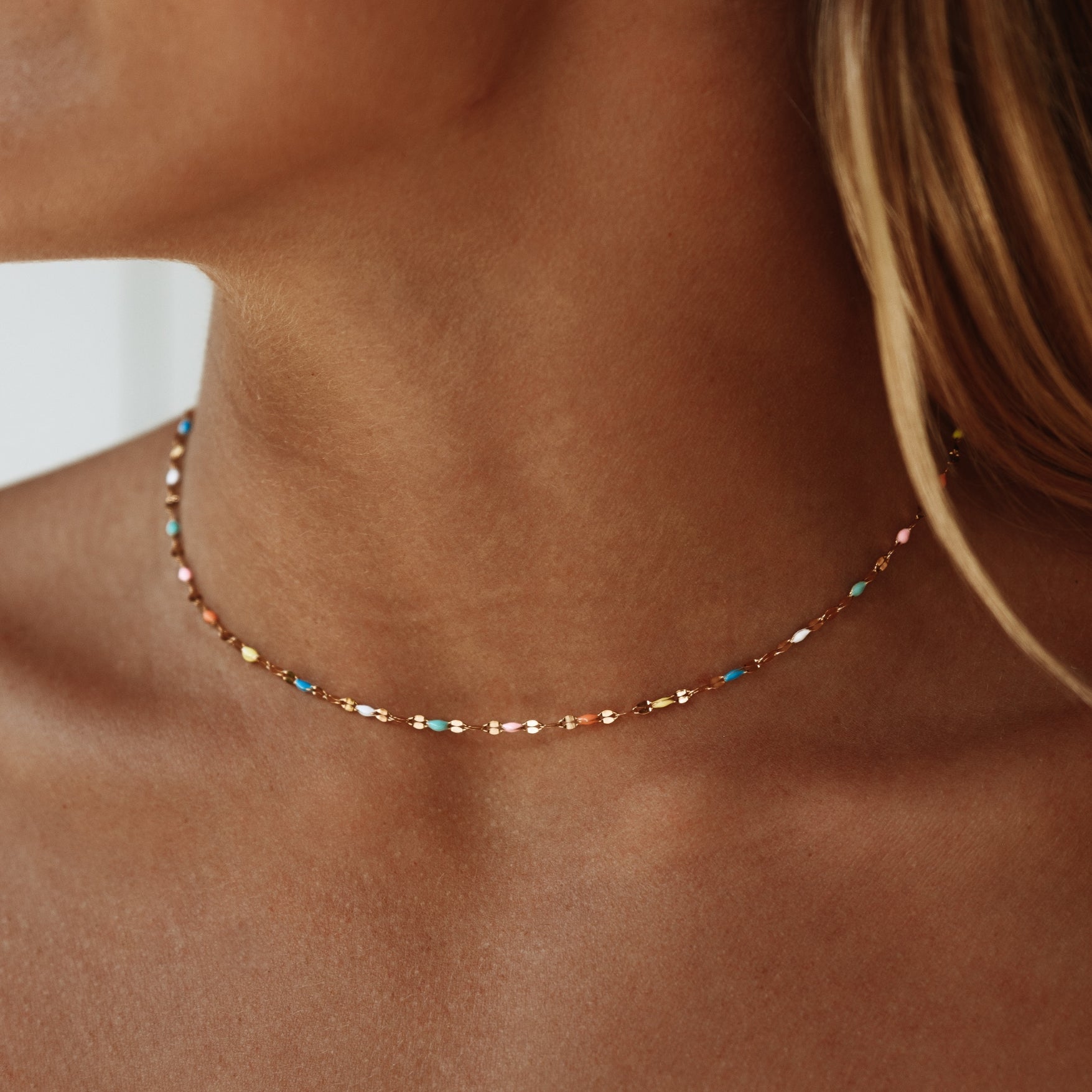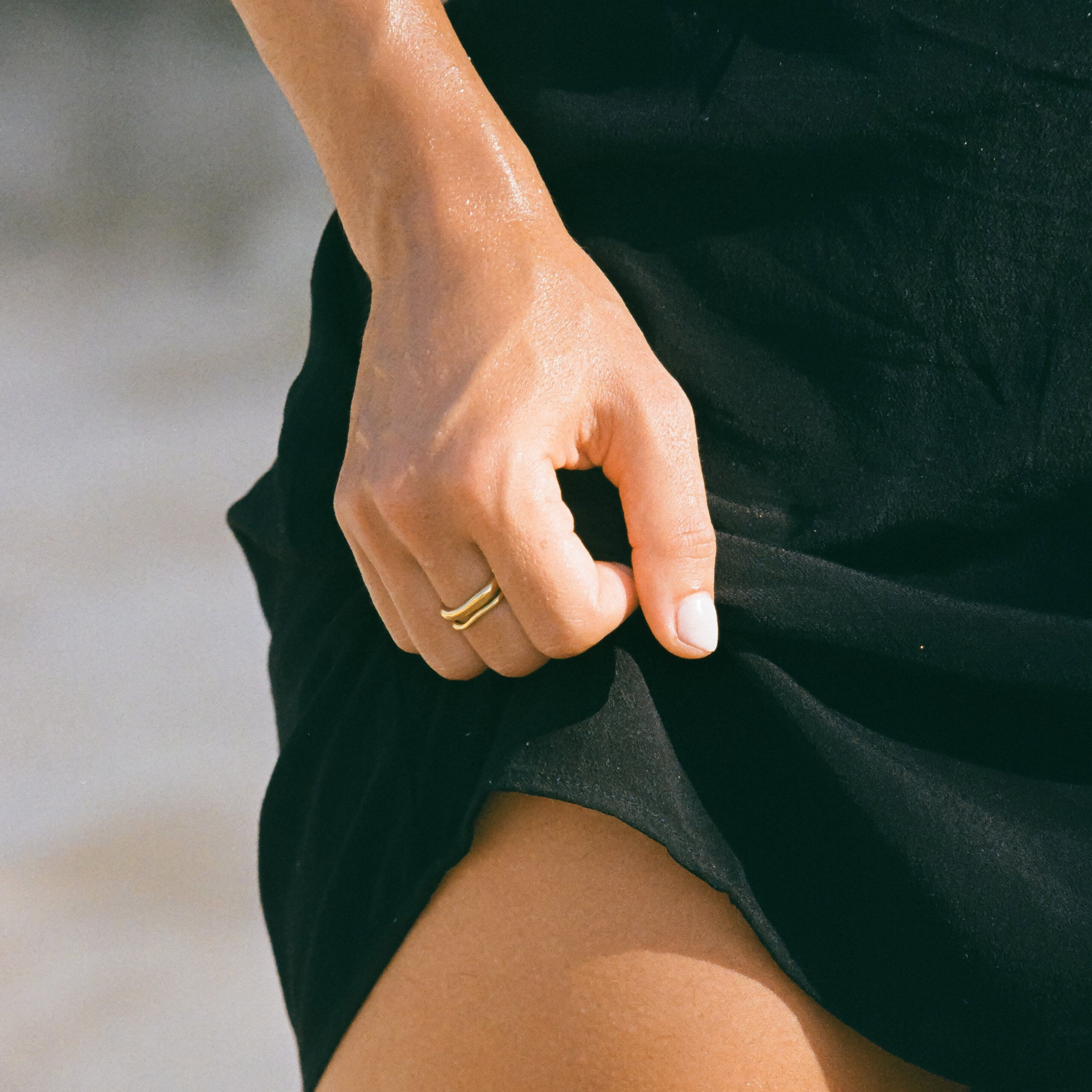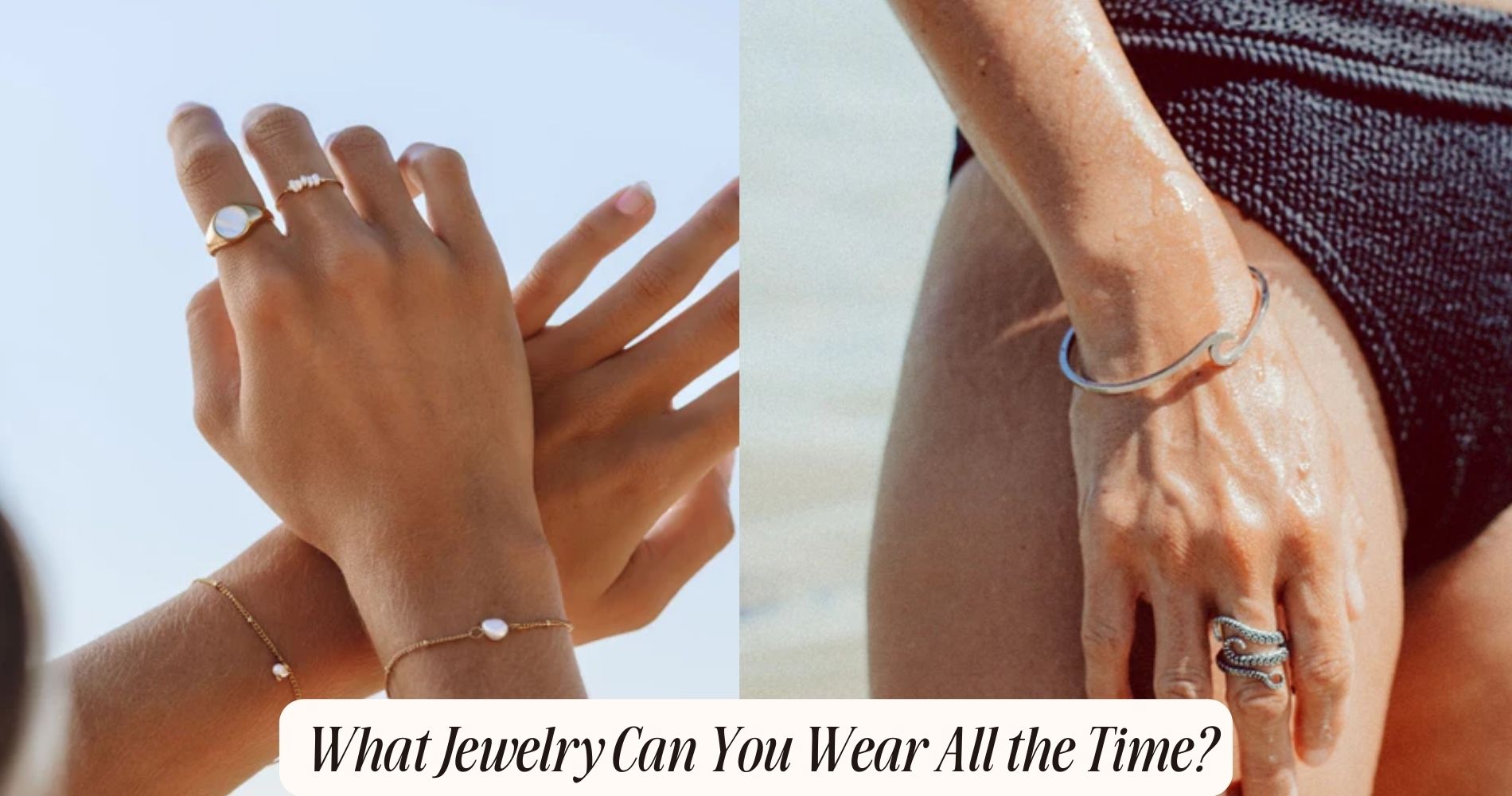
How to Clean a Necklace: Easy Steps
Gather Cleaning Supplies
To begin, you'll need to gather essential cleaning supplies like a soft-bristle toothbrush, a lint-free cloth, a mild dish soap, and a small bowl of lukewarm water. These items are vital for ensuring a thorough and gentle cleaning process. Start by donning protective gloves to safeguard your hands from any potential irritants in the cleaning agents
Next, prepare your workspace. Choose a flat, well-lit area and cover it with a clean, soft towel to prevent the necklace from getting scratched or damaged. This workspace prep step is essential, as it also helps contain any spills and keeps your necklace from slipping away during cleaning.
Pour a small amount of mild dish soap into the bowl of lukewarm water, mixing until you see a few bubbles forming. Make sure the soap is gentle to avoid any abrasive effects on the necklace. Dip the soft-bristle toothbrush into the soapy water, ensuring it's not too wet to avoid soaking the necklace.
Keep the lint-free cloth nearby to wipe the necklace dry after cleaning.
Identify Necklace Material
Understanding the composition of your necklace is essential for selecting the appropriate cleaning method and avoiding potential damage. Begin with material identification by examining your necklace closely. Look for any stamps or markings that indicate the type of metal, such as '925' for sterling silver, '10K', '14K', or '18K' for gold, or 'PT' for platinum. These markings are typically located near the clasp.
Next, assess the necklace composition by identifying any gemstones or additional materials integrated into the piece. Check for the presence of diamonds, pearls, or other precious stones, and note whether they're natural or synthetic. This distinction is important, as different materials require specific care techniques.
For a more thorough analysis, use a magnifying glass to inspect the surface texture and color. Gold, silver, and platinum will exhibit distinct hues and finishes. If you're unsure about the material, consider using a jewelry testing kit or consulting a professional jeweler.
Once you've accurately identified the materials, document your findings. This record will help you follow precise cleaning instructions tailored to each component, ensuring that your necklace remains in pristine condition without accidental damage.
Cleaning Gold Necklaces
When cleaning your gold necklace, use a gentle cleaning solution like a mixture of mild dish soap and warm water to avoid damaging the metal.
After cleaning, make sure you properly dry the necklace using a soft, lint-free cloth to prevent water spots and tarnishing.
For best care, store your necklace in a soft pouch or a fabric-lined jewelry box to minimize exposure to air and moisture.
Gentle Cleaning Solutions
For cleaning gold necklaces, use a solution of warm water mixed with a few drops of mild dish soap to gently lift dirt and oils. This homemade cleaner is both effective and eco-friendly, guaranteeing your gold necklace maintains its luster without the use of harsh chemicals.
First, fill a small bowl with warm water. Make sure the temperature is comfortable to touch, as excessively hot water can damage the delicate metal. Add a few drops of a mild dish soap, such as one labeled as biodegradable or eco-friendly, and stir to create a gentle cleaning solution.
Submerge the gold necklace in this mixture, allowing it to soak for 10-15 minutes. This will help to loosen any accumulated grime. Then, using a soft-bristled toothbrush, gently scrub the necklace, focusing on intricate areas where dirt tends to build up. Be cautious not to use excessive force, as this can scratch the gold surface.
Once cleaned, rinse the necklace thoroughly under lukewarm running water to remove any soap residue. Make certain all soap is washed away, as leftover detergent can dull the gold's shine.
This method leverages eco-friendly solutions and homemade cleaners to keep your gold necklaces looking pristine.
Proper Drying Techniques
After rinsing, gently pat the gold necklace dry with a soft, lint-free cloth to prevent water spots and tarnishing. Use a microfiber cloth if available, as it minimizes the risk of scratching the delicate metal surface. Make sure that you blot rather than rub the necklace to avoid any potential abrasion that could dull its shine.
Next, consider air drying the necklace. Lay it flat on a clean, dry surface in a well-ventilated area. This method ensures evaporation of any residual moisture from crevices and intricate designs. However, ensure the area is dust-free to prevent particles from settling on the damp necklace.
For a quicker approach, towel drying is effective. Lay the necklace on a dry, absorbent towel and gently roll it up, applying light pressure to wick away any remaining moisture. Unroll and repeat if necessary, making sure the necklace is completely dry before handling further.
Never use heat sources like hair dryers or direct sunlight to speed up the drying process, as this can cause discoloration or damage to the gold. Proper drying techniques are important for maintaining the necklace's luster and longevity, so take your time to make sure it's thoroughly dry.
Storing Your Necklace
Proper storage of your gold necklace is essential for preserving its brilliance and preventing damage. Begin by selecting a storage solution that minimizes necklace tangling. Jewelry organizers with individual compartments or hooks are ideal. If you're using a jewelry box, make sure each necklace is stored in a separate slot or hung vertically.
To further prevent necklace tangling, consider using anti-tarnish strips or cloths. These materials not only maintain the necklace's shine but also inhibit tarnish formation. Place the anti-tarnish strip within the compartment or wrap the necklace in an anti-tarnish cloth before storing it.
Additionally, avoid storing your gold necklace in areas with high humidity or extreme temperatures, as these conditions can accelerate tarnish and degrade the metal. Opt for a cool, dry place, such as a drawer or a dedicated jewelry cabinet.
Cleaning Silver Necklaces
To clean your silver necklace effectively, begin by preparing a solution of lukewarm water and a few drops of mild dish soap. Submerge your necklace in the mixture for about 10-15 minutes to loosen any dirt or grime.
For tarnish removal, use a soft-bristled toothbrush to gently scrub the necklace, focusing on intricate areas where tarnish tends to accumulate. This helps to lift off any stubborn residues without scratching the silver.
After scrubbing, rinse the necklace thoroughly under lukewarm water to remove any soap residue. It's important to dry your necklace completely using a soft, lint-free cloth. Patting it dry ensures you don't leave any water spots, which can promote tarnishing.
For an added layer of shine, use a silver polishing cloth. These cloths are impregnated with special chemicals designed for silver polishing, effectively restoring your necklace's luster. Rub the necklace gently with the polishing cloth, following the grain of the metal, if visible.
Avoid using abrasive cleaners or materials, as these can damage the silver.
With these steps, your silver necklace should be clean, tarnish-free, and gleaming.
Cleaning Costume Jewelry
When cleaning costume jewelry, you'll need to use different techniques and materials than those used for silver. Costume jewelry often contains various materials like base metals, plastics, and rhinestones, which can be sensitive to harsh chemicals and abrasive cleaning methods.
First, avoid abrasives like baking soda or toothpaste, as they can scratch and damage the surface. Instead, opt for alternative cleansers such as a mild dish soap mixed with lukewarm water.
To begin, fill a small bowl with this soapy solution. Dip a soft cloth or a soft-bristle toothbrush into the mixture and gently scrub the jewelry. Focus on hard-to-reach areas where dirt can accumulate. Be cautious around glued components, as excessive moisture can weaken the adhesive.
After scrubbing, rinse the jewelry with cool, clean water. Make sure to rinse thoroughly to remove any soapy residue. Pat dry with a soft, lint-free cloth, and allow the jewelry to air dry completely before storing it.
For added protection, store your costume jewelry in a cool, dry place, preferably in individual pouches or compartments to prevent pieces from tangling and scratching each other. This careful approach guarantees your costume jewelry remains vibrant and intact.
Cleaning Gemstone Necklaces
To clean your gemstone necklaces, start by using a gentle cleaning solution designed specifically for delicate stones. Employ a soft-bristle brush to meticulously remove grime without scratching the surface.
After cleaning, make sure thorough drying before storing in a soft, padded container to prevent damage.
Gentle Cleaning Solutions
For cleaning gemstone necklaces, a mild detergent mixed with lukewarm water provides a safe and effective solution. Start by selecting a detergent free from harsh chemicals and abrasives. These can damage the gemstone's surface and degrade the necklace over time. Opt for natural solvents or homemade solutions, like a few drops of mild dish soap, as they're gentle yet effective.
Fill a bowl with lukewarm water and add a small amount of your chosen detergent. Stir the mixture until it's well combined. Submerge the necklace carefully into the solution, making sure all parts are covered but not soaking for too long. The lukewarm water helps to loosen dirt without causing thermal shock to the gemstones.
Next, gently agitate the necklace in the solution to dislodge any embedded grime. Avoid any vigorous movements that might scratch or dislodge the gemstones. Pay special attention to intricate settings where dirt and oils tend to accumulate.
Rinse the necklace under lukewarm running water to remove all traces of detergent. Make sure the water's temperature remains consistent to prevent any potential thermal damage to the gemstones. Finally, pat the necklace dry with a soft, lint-free cloth.
Soft-Bristle Brush Use
Utilize a soft-bristle brush to meticulously clean the intricate settings and crevices of your gemstone necklace, ensuring you reach areas inaccessible by simple soaking.
First, select a brush with ultra-soft bristles to prevent scratching the delicate surfaces of your gemstones and their settings. Opt for a baby toothbrush or a brush specifically designed for jewelry cleaning.
Begin by gently dipping the brush in your prepared cleaning solution. Employ a gentle brushing technique, using small, circular motions to dislodge dirt and grime. Focus on the areas where the gemstones meet the metal, as these tend to accumulate debris.
Be mindful of the pressure you apply; too much force can dislodge stones or damage the metal prongs and settings.
For particularly stubborn dirt, repeat the brushing process, ensuring that each stroke is deliberate and controlled. Pay special attention to the undersides of the gemstones and the fine details of the necklace's design.
Thoroughly rinse the necklace with lukewarm water after brushing to remove any residual cleaning solution.
Drying and Storing
After thoroughly rinsing the necklace, immediately pat it dry with a soft, lint-free cloth to prevent water spots and potential tarnishing. Make sure you gently dab around the gemstone settings to remove any residual moisture, as water trapped in these areas can lead to discoloration or metal corrosion.
Next, place the necklace on a flat, clean surface with good air circulation. Avoid using direct heat sources like hairdryers, as these can damage the gemstones. Allow the necklace to air dry completely, which usually takes a few hours. Proper air circulation is critical to avoid any trapped moisture, which can compromise the integrity of both the gemstones and the metal settings.
When it comes to storing your necklace, controlling humidity is essential. Use a jewelry box with a lined interior to protect against scratches and a small silica gel packet to maintain low humidity levels. High humidity can cause certain gemstones to swell or metals to tarnish.
Additionally, store the necklace in a dedicated compartment to avoid contact with other jewelry pieces, which can lead to scratches and abrasions. Following these steps will help make sure your gemstone necklace remains in pristine condition over time.
Cleaning Pearl Necklaces
To clean a pearl necklace, start by laying it on a soft, lint-free cloth to prevent any damage. This important step is vital for effective pearl care, as it minimizes the risk of scratching the delicate surface.
Next, prepare a solution of lukewarm water and a few drops of mild, pH-balanced soap—avoid harsh detergents that could harm the pearls.
Dip a soft, non-abrasive cloth into the soapy water, then gently wipe each pearl individually. Make sure not to immerse the entire necklace in water, as this can weaken the silk thread. Pay extra attention to any grime or residue, but remember that polishing pearls should be done with utmost caution to avoid abrasion.
After cleaning each pearl, use another clean, damp cloth to remove any soap residue. This step ensures that no cleaning solution is left behind, which could dull the pearls over time.
Handle the necklace gently throughout the process to maintain its integrity.
Drying and Polishing
Once you've removed all soap residue, lay the necklace flat on a clean, dry, lint-free cloth to start the drying process. Gently pat the necklace with another lint-free cloth to absorb any remaining water. Avoid rubbing, as this can cause scratches or damage delicate components.
Next, allow the necklace to air dry completely. Place it in a well-ventilated area, away from direct sunlight or heat sources, which could lead to the materials warping or tarnishing. This guarantees all moisture evaporates, preventing potential corrosion or degradation.
For polishing, select a specialized jewelry polishing cloth. These cloths contain micro-abrasives and polishing agents designed to restore shine without harming the surface. Using gentle, circular motions, buff the necklace, paying special attention to intricate details and hard-to-reach areas. This technique assures even polishing and helps maintain the piece's original luster.
For heavily tarnished pieces, consider using a professional-grade polishing compound. Follow the manufacturer's instructions carefully, applying the compound with a soft cloth and then buffing with a clean drying cloth. This method effectively eliminates tarnish and restores brilliance.
Storing Necklaces Properly
Proper necklace storage is crucial for preventing tangling, tarnishing, and damage to delicate components. To start, you should invest in a jewelry organizer with individual compartments or hooks. This method excels at avoiding tangles, as each necklace hangs separately, reducing the risk of knots and kinks.
For necklaces prone to tarnish, consider using anti-tarnish strips or pouches. These accessories contain materials that absorb moisture and sulfur compounds, thereby preventing tarnish. Place each necklace in its own anti-tarnish pouch before storing it in a drawer or jewelry box. This dual-layer protection ensures your pieces remain pristine.
Another effective technique involves wrapping delicate necklaces in soft, non-abrasive cloths. This method not only provides a physical barrier against tangling but also offers a shield against environmental factors that can speed up tarnishing. Make sure the cloth is acid-free to avoid chemical reactions that could harm the metal.
For long-term storage, always keep your jewelry in a cool, dry place. Avoid areas with high humidity or direct sunlight, as these conditions can accelerate tarnishing and degrade the materials. By following these detailed instructions, you'll keep your necklaces looking their best for years to come.
Regular Maintenance Tips
To maintain your necklace's brilliance, use gentle cleaning methods such as a soft-bristle brush and mild soap, ensuring you reach intricate areas without causing damage.
Store your necklace in a fabric-lined jewelry box or an anti-tarnish pouch to minimize exposure to air and moisture.
Regularly inspect clasps and links for wear and tear, addressing any issues promptly to prevent breakage.
Gentle Cleaning Methods
For regular maintenance, gently clean your necklace using a soft-bristled brush and a mixture of lukewarm water and mild dish soap. Begin by creating a solution using a few drops of mild dish soap in a bowl of lukewarm water.
Avoid using harsh chemicals, as they can damage delicate materials and gemstones. Dip the soft-bristled brush into the soapy solution and gently scrub the necklace, paying close attention to intricate details and hard-to-reach areas.
If your necklace contains fragile or intricate elements, consider using an ultrasonic cleaner for a deeper clean. However, be cautious; not all materials are suitable for ultrasonic cleaning. For instance, avoid using ultrasonic cleaners for necklaces with pearls or certain gemstones like emeralds, as the vibrations can cause damage.
Once you've gently scrubbed the necklace, rinse it thoroughly under lukewarm running water to remove any soap residue. Use a soft, lint-free cloth to pat the necklace dry, ensuring no moisture remains in the crevices.
Regularly performing this gentle cleaning method will help maintain the shine and longevity of your necklace without causing undue wear or damage.
Proper Storage Practices
Storing your necklace in a dedicated jewelry box with individual compartments helps prevent tangling and minimizes exposure to humidity and dust. Choose a box made of materials that resist tarnish, such as tarnish-resistant cloth or treated wood. Make sure each compartment is lined with soft fabric to prevent scratches.
Temperature control is essential for maintaining the integrity of your necklace. Store your jewelry box in a cool, dry place, away from direct sunlight. Sudden temperature changes can cause materials to expand or contract, potentially damaging delicate components. Aim to keep your storage area at a consistent room temperature to avoid these issues.
Humidity levels play a significant role in the longevity of your necklace. High humidity can accelerate tarnishing and corrosion, especially for metals like silver. Use silica gel packets or a dehumidifier within your jewelry storage to maintain an ideal humidity level of around 40-50%. Regularly check and replace silica gel packets to ensure ongoing protection.
Conclusion
To sum up, taking care of your necklaces guarantees longevity and shine. By gathering the right cleaning supplies, identifying the necklace material, and following specific methods for gold, silver, costume jewelry, and pearls, you'll preserve their beauty.
Always dry and polish meticulously, and store them properly to prevent tarnish or damage. Regular maintenance, such as gentle cleaning and safe storage, is essential.
Implement these expert techniques, and your necklaces will remain stunning and well-kept for years.


























Leave a comment
This site is protected by hCaptcha and the hCaptcha Privacy Policy and Terms of Service apply.